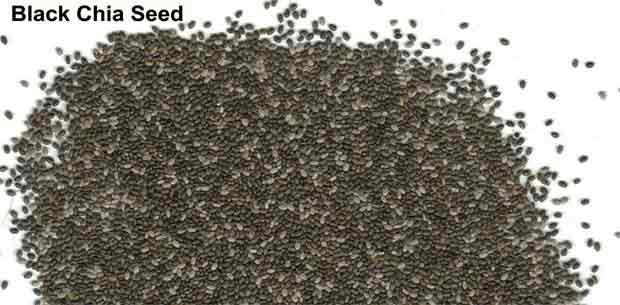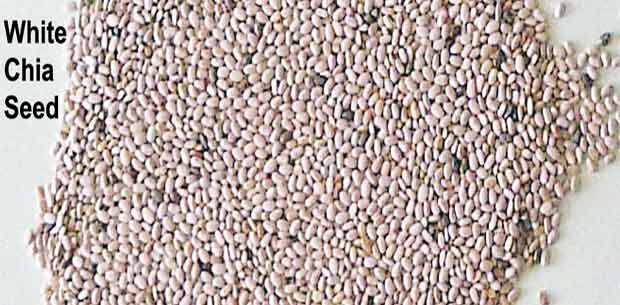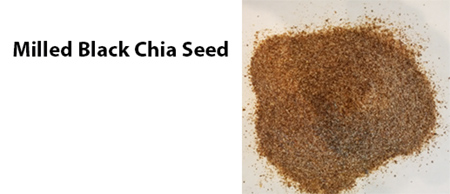Black Chia Seeds vs White Chia Seeds
Protein and oil content, as well as fatty acid profile of black chia seeds and white chia seeds grown at various locations and in different countries
| LOCATION | COLOR | PROTEIN | LIPIDS | PALMITIC | STEARIC | OLEIC | LINOLEIC | LINOLENIC |
|---|---|---|---|---|---|---|---|---|
|
%
|
%
|
% of lipids
|
% of lipids
|
% of lipids
|
% of lipids
|
% of lipids
|
||
|
1
|
WHITE
|
14.2
|
32.8
|
6.7
|
3.3
|
6.8
|
17.4
|
64.5
|
|
BLACK
|
15.6
|
31.2
|
6.7
|
3.7
|
7.0
|
17.3
|
63.3
|
|
|
2
|
WHITE
|
12.4
|
29.3
|
6.7
|
3.3
|
6.8
|
17.9
|
63.7
|
|
BLACK
|
12.3
|
30.2
|
6.3
|
3.3
|
6.7
|
18.0
|
63.5
|
|
|
3
|
WHITE
|
21.0
|
32.1
|
6.0
|
5.0
|
6.4
|
15.7
|
66.2
|
|
BLACK
|
20.2
|
33.2
|
6.3
|
3.3
|
5.8
|
15.6
|
67.3
|
|
|
4
|
WHITE
|
18.4
|
35.7
|
64.4
|
||||
|
BLACK
|
19.6
|
35.2
|
64.9
|
|||||
|
average
|
WHITE
|
16.5
|
32.6
|
64.7
|
||||
|
BLACK
|
16.9
|
32.4
|
64.8
|
The table shows that greater differences in composition are produced by location (due to climatic differences) than there are between white and black chia seed. Thus color is the only significant difference.
As an added note, if one plants black chia seed black chia seed will be produced, on the other hand if you plant white chia seed white chia seed will be produced.
Ayerza and Coates, 2006. Unpublished. Analyses completed by an ISO 9000 certified laboratory.







